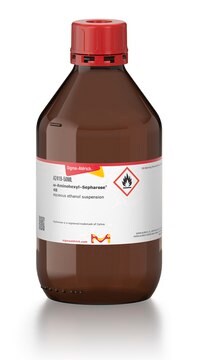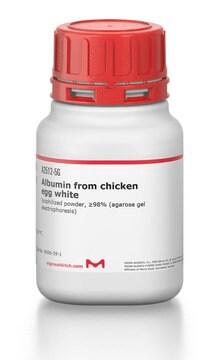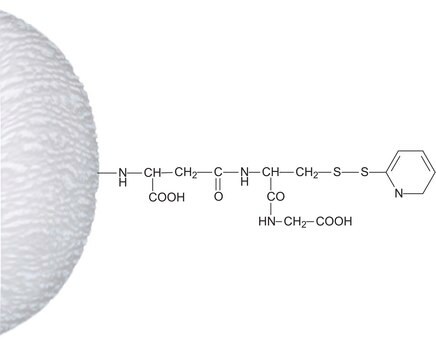A6017
6-Aminohexyl-Agarose
saline suspension
Synonym(e):
ω-Aminohexyl-Agarose, 1,6-Diaminohexan-Agarose (N-gebunden)
About This Item
Empfohlene Produkte
Biologische Quelle
plant
Form
saline suspension
Kennzeichnungsgrad
≥5 μmol per mL
Methode(n)
affinity chromatography: suitable
Matrix
cross-linked 4% beaded agarose
Matrixaktivierung
cyanogen bromide
Matrixanbindung
amino of 1,6-diaminohexane
Matrix-Spacer
1 atom
Kapazität
≥5 mg/mL binding capacity (bovine serum albumin)
Eignung
suitable for chromatography
Lagertemp.
2-8°C
Suchen Sie nach ähnlichen Produkten? Aufrufen Leitfaden zum Produktvergleich
Allgemeine Beschreibung
Anwendung
Biochem./physiol. Wirkung
Physikalische Form
Sonstige Hinweise
Signalwort
Danger
H-Sätze
Gefahreneinstufungen
Eye Dam. 1 - Skin Irrit. 2
Lagerklassenschlüssel
10 - Combustible liquids
WGK
WGK 3
Flammpunkt (°F)
Not applicable
Flammpunkt (°C)
Not applicable
Persönliche Schutzausrüstung
Eyeshields, Gloves, multi-purpose combination respirator cartridge (US)
Analysenzertifikate (COA)
Suchen Sie nach Analysenzertifikate (COA), indem Sie die Lot-/Chargennummer des Produkts eingeben. Lot- und Chargennummern sind auf dem Produktetikett hinter den Wörtern ‘Lot’ oder ‘Batch’ (Lot oder Charge) zu finden.
Besitzen Sie dieses Produkt bereits?
In der Dokumentenbibliothek finden Sie die Dokumentation zu den Produkten, die Sie kürzlich erworben haben.
Unser Team von Wissenschaftlern verfügt über Erfahrung in allen Forschungsbereichen einschließlich Life Science, Materialwissenschaften, chemischer Synthese, Chromatographie, Analytik und vielen mehr..
Setzen Sie sich mit dem technischen Dienst in Verbindung.






